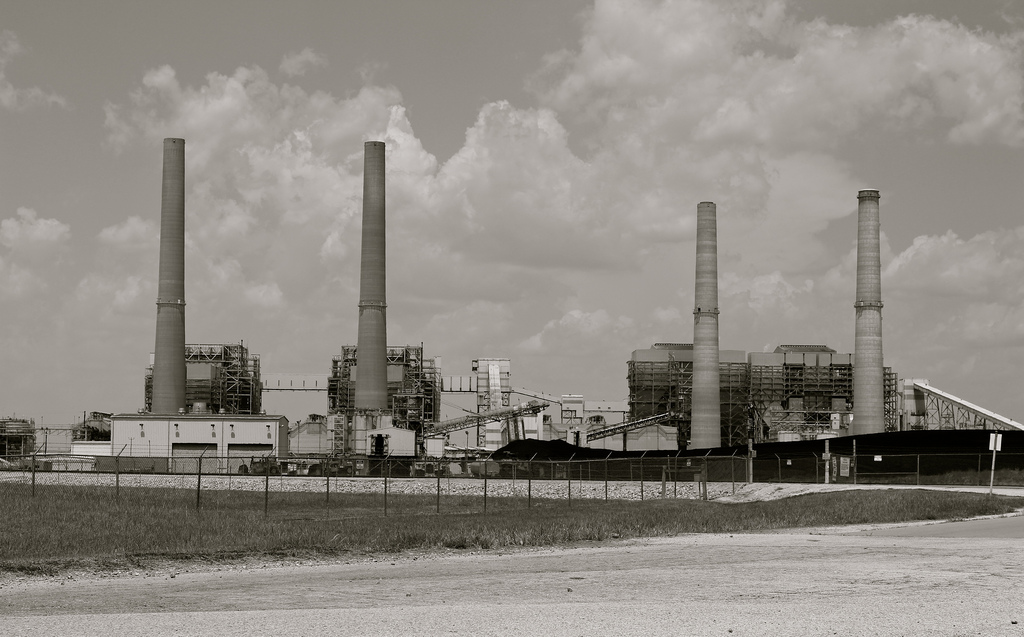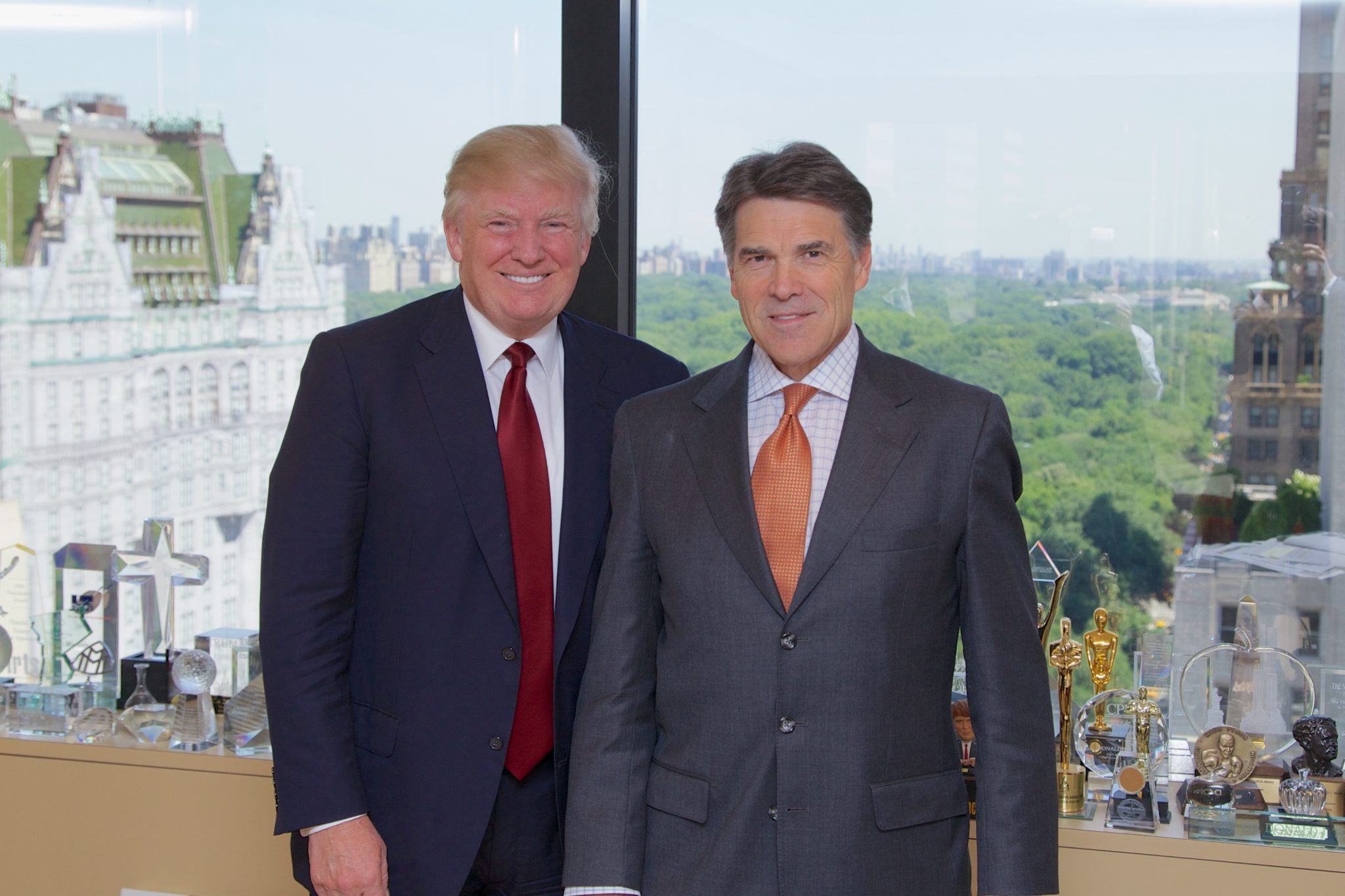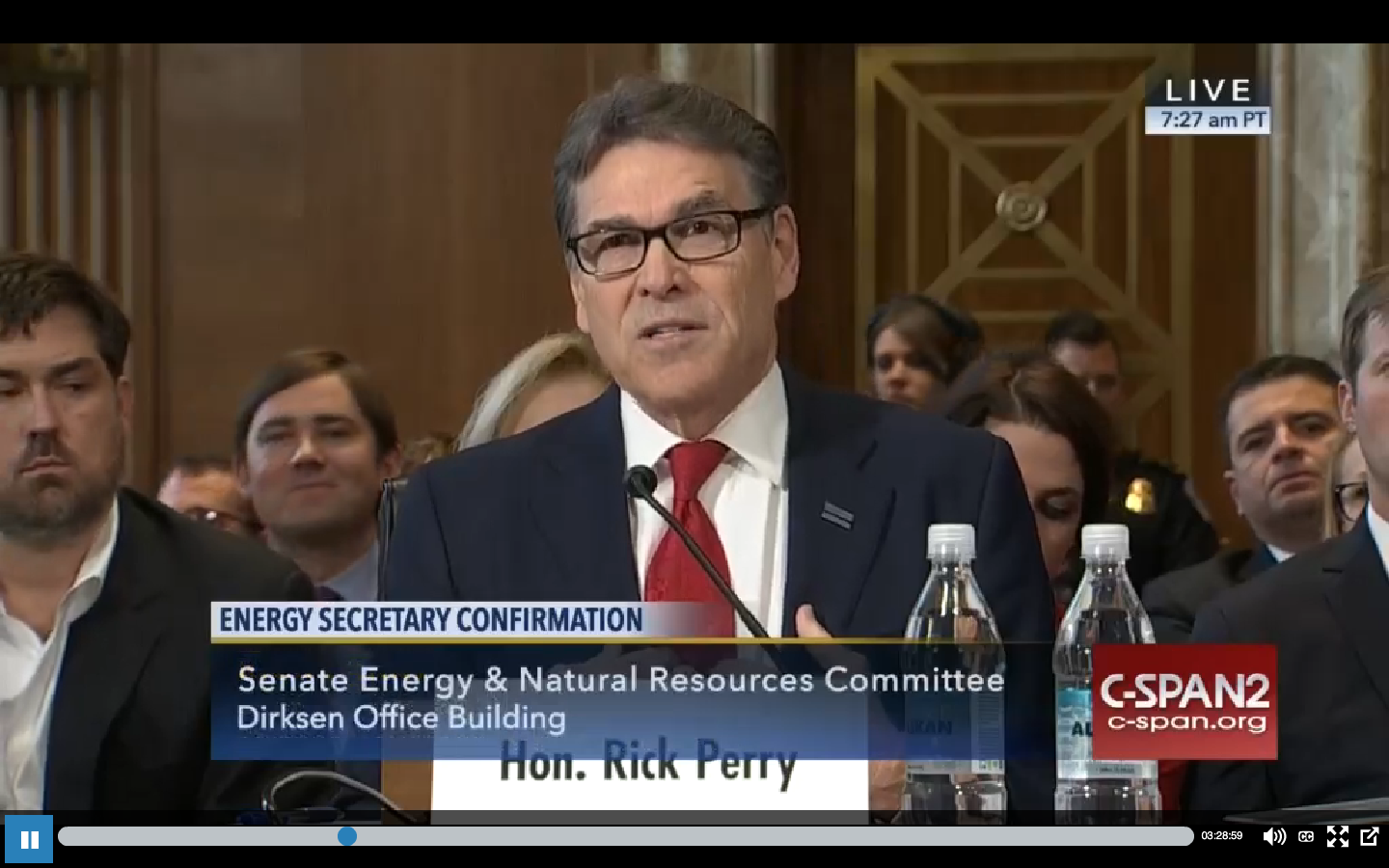
Obama EPA Proposes Major Cuts to Carbon Pollution

Above: The W.A. Parish coal plant in Ft. Bend County
Yesterday, the Environmental Protection Agency unveiled its long-awaited carbon pollution rules targeting coal plants. For President Obama and those increasingly concerned about the threat of climate change, the proposal could not be more welcome. It finally tackles global warming by proposing fairly concrete greenhouse gas reductions and pushes carbon kingdoms like Texas—the nation’s top carbon dioxide emitter—to build on successes with renewable power, energy efficiency and conservation.
Texas will have to come up with a plan to cut the rate of greenhouse gas emissions by 39 percent by 2030, relative to 2012 levels. Nationally, EPA expects a 30 percent reduction in greenhouse gases from electricity generation by 2030, compared to pre-Recession 2005 levels. (Yes, the figures are confusing… more on that later.)
Although the 645-page proposal goes to great lengths to describe the flexibility and generous timeline granted to the states, Texas industry and political leaders are unlikely to play nice. When it comes to the Obama EPA and Texas, nothing is easy.
Gov. Perry has long been an ally of the Texas coal industry. In 2006, he issued a rare executive order—later struck down by a judge—”fast-tracking” 11 coal plants that were being delayed by grassroots opposition and legal challenges. In mid-May, Perry accused Obama of waging a “war on coal” and labeled the EPA a “den of activists.”
When, in May, the White House released an alarming scientific survey of global warming ravages already underway, the state environmental agency’s official response was to worry about how responding to climate change would “result in greatly reduced use of coal,” and to declare that purported higher energy costs were “the true environmental impact of the war on coal.”
And 29 members of Texas’ congressional delegation, including five of the 12 Democrats, signed a letter arguing that “climate change policy should be directed by Congress.” (That policy appears to be “do nothing.”)
The Texas Association of Business took a Chicken Little approach today. “This plan will also cause the cost of electricity to skyrocket, so, if you manage to keep your job you may not be able to afford to keep the lights on,” said the association’s CEO, Bill Hammond, in a statement.
The Clean Power Plan, as EPA has dubbed the proposed carbon rules, would give states two to three years to draft a plan, and largely leaves the details of how to achieve the reductions in greenhouse gases to the states. States could focus on building out renewable energy, making fossil fuel plants more efficient, setting up a regional cap-and-trade system, reducing energy consumption through energy efficiency and conservation, or, more likely, a combination of methods.
Still, the rule is expected to fall heavily on the embattled coal industry.
“The interesting thing about this rule is that it’s very targeted,” said Al Armendariz, a former regional EPA administrator in Texas who’s now with the Sierra Club. “It’s not going to affect our refineries; it’s not going to affect the chemical plants along the Gulf; it’s not going to affect the oil and gas fields. … It’s focused on the largest, most polluting sources of electricity, which in Texas are our coal-fired power plants and in particular those that burn lignite.”
Armendariz calculates that the six dirtiest power plants in Texas—all of them coal—account for more than 30 percent of all the carbon emitted, about 83.8 million tons, in Texas’ electricity sector. The Martin Lake plant in East Texas, owned by TXU, alone emits almost 7 percent of carbon emissions, out of the 118 power plants in the state.
“I suspect that what’s going to happen is that a small number of power plants are going to be phased out and be replaced with renewable energy,” Armendariz says.
But the reductions wouldn’t all have to come from directly cutting pollution from power plants. For example, Texas could get credit for cuts from energy efficiency improvements on homes, like weatherizing or more efficient appliances, or rolling out “demand response” measures such as programs that idle big power producers during those hot summer days.
Texas could also benefit from trends already powering a partial decarbonization in the utility sector.
For all the talk of a “war on coal,” regulations attacking the fuel source for its outsized contribution to mercury, smog, soot and greenhouse gases have only been a partial reason for the industry’s decline. Increasing competition from renewables—and in Texas, that means largely wind power—and the dramatic drop in natural gas prices have been perhaps an even bigger factor. There’s no better illustration of that than the colossally bad bet made by private equity firms when they purchased Energy Future Holdings (previously TXU) in 2007. Their bet was on the price of natural gas remaining high, which would have made profitability of that company’s fleet of coal and nuclear plants a very attractive investment. Instead, natural gas prices plummeted and EFH is now in bankruptcy proceedings.
San Antonio’s city-owned CPS Energy decided in 2011 to shutter one of its coal plants years ahead of schedule, making up the difference with wind, solar and energy efficiency—a decision the utility is now crowing about. Austin Energy is considering if, and how, to wind down its own coal plant.
And lots of coal plants are coming up for mothballing or retirement anyway. As the EPA rule points out, by 2025 the average of the coal fleet will be 49 years old and 20 percent of the plants would be more than 60 years old.
In other words, market forces are hard at work making coal obsolete, in the U.S. at least.
Michael Webber, a widely-respected energy professor at UT-Austin, told the Austin American–Statesman that the EPA rules are “a hug from Obama to Texas” because natural gas will gain so much.
In a sense, the carbon rules are pushing the energy sector in a direction it’s already headed, like a driver tapping the accelerator on a car that’s rolling downhill.
It’s also not clear how drastic the cuts would actually be. The 39 percent reduction required of Texas may sound like a huge number but it’s based on an emissions rate—pounds of carbon emitted per unit of energy—not the total tons of carbon. Texas will have to reduce its carbon intensity and experts are still puzzling out how that would translate into overall greenhouse gas reductions from the utility sector. Nationally, EPA expects carbon emissions to fall by 30 percent by 2030 but did not prescribe the exact tons of carbon per state.
Still, it’s likely that Texas officials will resist every step of the way. When the EPA ordered states to start issuing greenhouse gas permits for major industrial sources, Texas was the only state to refuse to comply, causing the feds to take over and delay the issuing of permits.
I asked a top Environmental Defense Fund attorney what she expected from Texas. She said that that greenhouse gas permitting program was instructive.
“At the end of the day industry stakeholders went to the state and said we want you to have this authority and not the EPA,” said Megan Ceronsky, EDF’s director of regulatory policy. “My assumption is that the same thing will happen here.”


